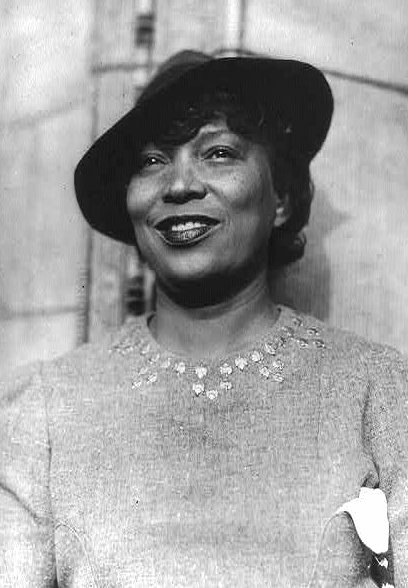Difference between revisions of "Zora Neale Hurston and Adoption"
m (Admin moved page Zora Neale Hurston to Zora Neale Hurston and Adoption) |
m (→References) |
||
| Line 19: | Line 19: | ||
Lyons, Mary E. Sorrow's Kitchen: The Life and Folklore of Zora Neale Hurston. (London; [[New York]]: Scribner's, 1990) | Lyons, Mary E. Sorrow's Kitchen: The Life and Folklore of Zora Neale Hurston. (London; [[New York]]: Scribner's, 1990) | ||
Dictionary of American Biography | Dictionary of American Biography | ||
| − | Hinton, Kip Austin. "Zora Neale Hurston." [Includes portraits]. Available at: | + | Hinton, Kip Austin. "Zora Neale Hurston." [Includes portraits]. Available at: pages.prodigy.com/zora/index.htm |
[[Category: Adoption Celebrities]] | [[Category: Adoption Celebrities]] | ||
Latest revision as of 04:37, 5 March 2018
Biography
Hurston was born in the all-Black and Black-governed town of Eatonville, Florida. Her father, a carpenter and minister, and his wife had eight children.
When her mother died she was nine and her father immediately sent her away to school in Jacksonville. When he remarried soon afterwards their relationship deteriorated to the point that he tried to get the school to adopt her. This did not happen, but at 13 she went to be nanny to her brother's children.
At 16 she became a maid to a white actress, before, with her employer's help, she went first to Morgan Academy high school, then Howard University's preparatory school, Howard University and Barnard College. At Barnard she became a student of anthropologist Franz Boas, who encouraged her to collect African-American and Caribbean folklore. Her race gave her entrance into Black culture denied white scholars and she became an expert on Voodoo (Tell My Horse, 1938).
Already at Howard she had begun publishing literary writing, (Jonah's Gourd Vine, 1934 was her first book) and soon became a leading figure in the Harlem Renaissance, with Langston Hughes, Countée Cullen and others. Her masterpiece is reckoned to be Their Eyes Were Watching God (1937).
By the 1940s her star had begun to fade: Boas, her mentor, was dead, and publishing was not bringing in enough income. She again became a maid, then a librarian and substitute (relief) teacher in Florida. But by the time she suffered a stroke in 1959 she was impoverished and when she died she was buried in an unmarked grave.
Beginning in the 1970s there has been a great revival of interest in her work, and in 1973 Alice Walker found her grave and erected a stone in her memory.
References
Microsoft Encarta 98 Encyclopedia, 1993-97 Hurston, Zora Neale. Dust Tracks on a Road. (New York: HarperPerennial, 1991) Porter, A.P. Jump at de Sun: The Story of Zora Neale Hurston. (Minneapolis: Carolrhoda Books, 1992) Lyons, Mary E. Sorrow's Kitchen: The Life and Folklore of Zora Neale Hurston. (London; New York: Scribner's, 1990) Dictionary of American Biography Hinton, Kip Austin. "Zora Neale Hurston." [Includes portraits]. Available at: pages.prodigy.com/zora/index.htm
- Adoption Celebrities
- Adopted Persons
- African
- USA
- 19th Century
- 20th Century
- Journalism
- Literature
- Social Services and Social Sciences
- Financial Problems, Poverty, Bankruptcy
- School-age Years, Adolescence
- Sent to Boarding School, Apprenticed or Fostered as Part of Normal Traditional Child-Rearing
- Unmarried Mother, Single Parent (Mother or Father) Unable to Cope
- Siblings
- Institutional Care
- Parent(s) Died, Disappeared or Became Incapacitated
- Birth Sibling(s) Separated
- Fostered or Adopted by Birth Sibling(s)
